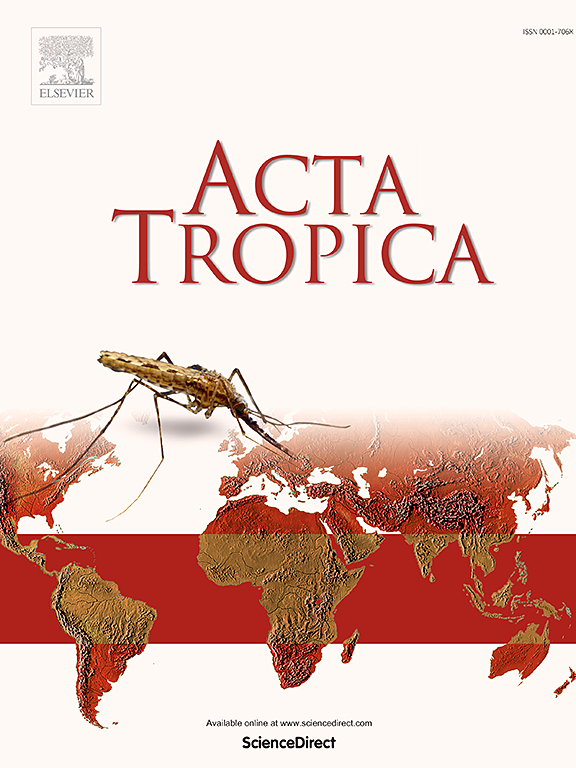Natural infection with Trypanosoma cruzi and feeding habits of Triatominae (Hemiptera: Reduviidae) from the state of Durango, Mexico
IF 2.1
3区 医学
Q2 PARASITOLOGY
引用次数: 0
Abstract
Chagas disease is a chronic and systemic condition caused by the protozoan Trypanosoma cruzi, acquired via abrasions or wounds on the skin or mucous membranes, through contact with feces or urine of hematophagous bugs belonging to the family Reduviidae, subfamily Triatominae. Many regions in Mexico are endemic for Chagas disease, but entomological and parasitological data are still limited. This study identified the incidence of natural infection with T. cruzi, as well as the feeding habits of the different species of triatomines circulating in the state of Durango, in the north-central region of Mexico. One hundred and ninety triatomines were taxonomically identified between February 2023 and May 2024 and a sample of intestinal content was obtained to identify the presence of T. cruzi by using microscopy and endpoint PCR. In addition, a 382 bp product of vertebrate cytochrome B (CytB) was amplified and sequenced to obtain the profile of feeding habits of this triatomines. Of the specimens collected, 121 were adults and 69 nymphs ranging from stage I to stage V. Of the collected adults, 115 were identified as Triatoma longipennis and 6 as Triatoma recurva. The specimens were collected both indoors (116) and in the peridomicile (74) showing a high overall percentage of positivity to natural infection with T.cruzi (54.5 %). Considering the total number of specimens collected, the colonization index was 36.32 %. In 27 of the 190 samples (14.22 %) CytB was amplified, revealing humans as the main feeding source for the triatomines. Our findings reveal that both species of triatomines were infected and predominantly found indoors, with humans as their primary feeding source. Comprehensive knowledge of the behavior of triatomine species that transmit T. cruzi allows their integrated control and the implementation of molecular tools for precise identification that strengthens the algorithms for epidemiological surveillance.
求助全文
约1分钟内获得全文
求助全文
来源期刊

Acta tropica
医学-寄生虫学
CiteScore
5.40
自引率
11.10%
发文量
383
审稿时长
37 days
期刊介绍:
Acta Tropica, is an international journal on infectious diseases that covers public health sciences and biomedical research with particular emphasis on topics relevant to human and animal health in the tropics and the subtropics.
 求助内容:
求助内容: 应助结果提醒方式:
应助结果提醒方式:


